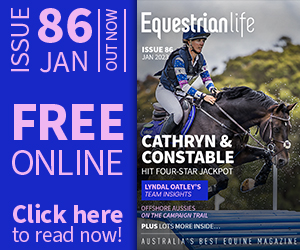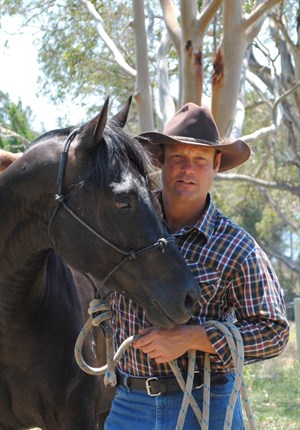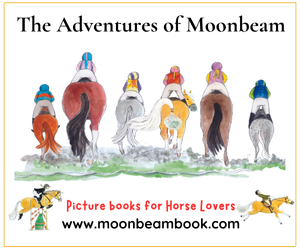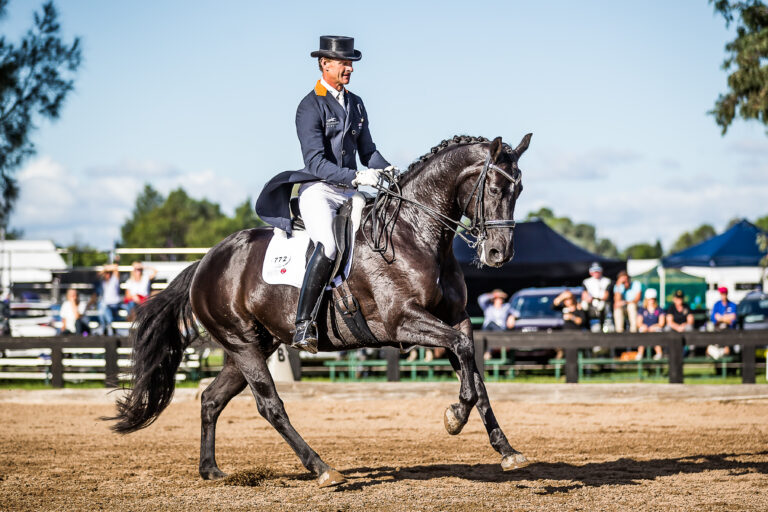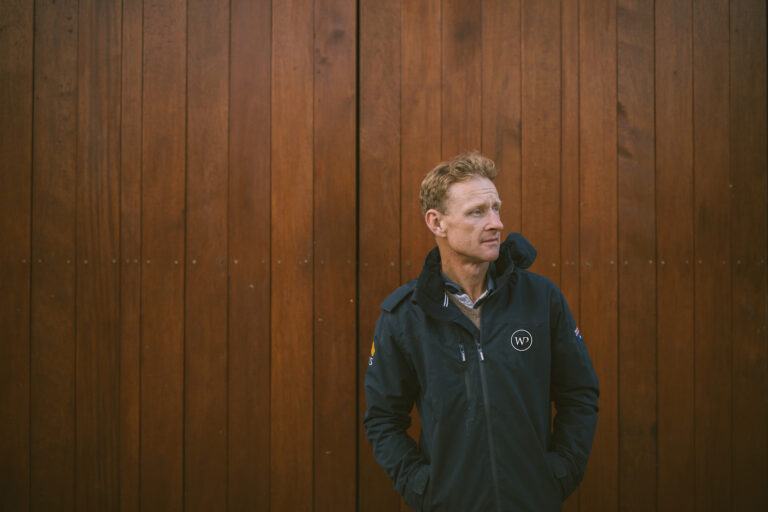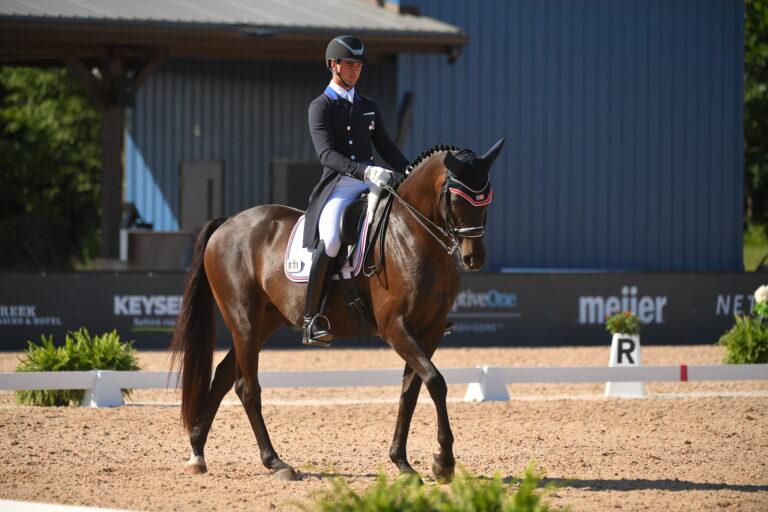This article has appeared previously with Equestrian Life. To see what’s in the current issue, please click here.
Paul Clarkson.
By Paul Clarkson
Noted breaker and trainer, Paul Clarkson, explains his views on why any ride you undertake should be a concentrated effort – in the same way that we would drive a car – not only for safety reasons, but also as a way to fully tune in to our horses.
You may have heard the saying, ‘if you’re not training, you may as well not be riding’. If we analyse this what does it really mean? Does it imply that every time we sit on a horse we have to be doing arduous work and patterns? Does it mean that we shouldn’t relax and go on trail rides? Does it mean all work and no play? To me it just means that we have to be conscience of what we are doing and where our horse is at, all the time. I’m speaking metaphorically of course. When I suggest that we have to ‘know where our horse is at’ all the time, I’m implying that although things are going well, this does not mean as riders that we can afford to relax to the point that our horse thinks that they are in charge.
I often say to riders when giving a lesson, ‘ride every stride’ and this follows a similar philosophical meaning. When talking this over with riders before, common responses have been ‘I don’t want to get too technical about riding’, or ‘I just want to be able to have fun and go for a trail ride’. Others have responded by saying, ‘it all seems a bit too serious for what I’m about’.
One analogy I use is to compare riding and driving a car. Look at the difficulties that young drivers are faced with when they are first learning to drive. There is so much to learn and often you have to do more than one thing at a time. For example when approaching a ‘T’ intersection a driver has to apply the brake slowly, work the clutch, transition through the gears, indicate the direction you will take, look out for oncoming traffic and then proceed back up through all the gears once he/she has turned the corner. All this is often under the added pressure of mum or dad screaming at you from the passenger seat. However, it isn’t long before the driver will negotiate the same intersection without even thinking about it and even do it listening to the radio or having a conversation with the person next to them.
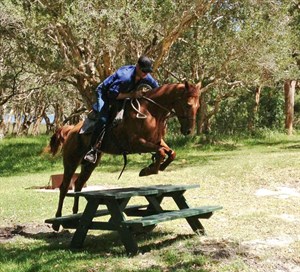
Paul Clarkson.
This is ‘pat your head, rub your tummy’ kind of stuff. Most of us would consider ourselves good drivers and we probably are. We need to be, otherwise we may get booked or stray off the road. The interesting point that must be made is that we become competent drivers through good and regular practice. This is something that, as riders, we sometimes take for granted.
My response to riders who reject the ‘ride every stride’ notion is to remind them that although they may go for a Sunday drive in the country they still have to drive the car to a degree of competency, obey the road rules and keep the car on the road. When we drive a car we have to be driving it 100 per cent of the time. The same can be said for horse riding. This doesn’t mean we always have to be riding on a concentrated rein or doing intense training, but rather we need to have our hands on the steering wheel at all times. Even though a drive in the country may not be as intense as driving in the city, we can’t afford to just ‘knock off the job’, so to speak, as we would soon end up in a ditch on the side of the road. The same will occur if we don’t ‘ride every stride’.
I use the ‘ride every stride’ analogy to get people thinking about safety and being aware of various situations as they ride. Just as when we drive a car, there are many things that we have to keep in mind. Some of the obvious things while driving is; the other vehicles on the road, road signs such as speed limits, conditions of the road, pedestrians, and incidental things such as straying animals.
I am often surprised at how little some riders take notice of the surrounding environment while they are riding. Instead, riders often focus on the wrong things. An example might be worrying about their horse swishing its tail rather than having a peripheral view of what is happening around them. Another mistake that riders make is to ‘switch off’ and become a passenger, allowing their horse to choose a path for them. This can happen particularly when friends ride together and one rider takes the lead and the other follows, rather than ‘riding their own ride’. Just as we need to be aware of the external factors that may influence our driving so should we also be aware of the same things while riding.
While there are external factors that we as riders have to be aware of, another aspect when considering the ‘ride every stride’ notion is being aware of your horse’s physical condition all the time. We can liken this to the condition of a car, such as the tyre pressure, water and oil levels, windscreen condition and so on.
Although all these things are important, the one thing that we as drivers do not have to consider is the mental status of our cars, unlike our horses. While there are external factors and physical factors that we must be aware of, it could be argued that the mental status of our horses is the most important aspect that we should consider in the ‘ride every stride’ concept.
It is for this reason that we as riders have to learn to recognise and read our horses properly. We could elaborate and continue to discuss the very many things that come into play when considering our horse’s mental and physical state. Just as we are living breathing beings and have different factors that influence the way we feel mentally and physically, from one day to the next, so too do our horses.
We need to, as leaders in the horse/human relationship, develop trust and respect through training in controlled environments that promote safety. For me, horsemanship is about controlling or redirecting energy. As the communication between our horses – and us as riders, grows – we develop tools to enable us to control situations that may arise on the trail. Furthermore, as the communication develops, our objective should be to gain greater trust and respect in our horses. This in turn will result in our horses turning to us for leadership and confidence in times of uncertainty.
About the Author: Paul Clarkson is a Breaker/Trainer, clinician, columnist and former Way Of The Horse Competitor. Paul is originally from Maitland in the Hunter Valley and grew up mucking around with his two brothers on the farm and learning to ride bareback. He runs a breaking and training business on the Mid North Coast of NSW. When it comes to horses Paul has got a thirst for knowledge. “I do an enormous amount of research on different disciplines through extensive reading, and studying renowned horsemen. I don’t particularly subscribe to any style, however if someone asks what my aim is, my answer would be constant improvement. I have the view that as long as I am challenging the way I do things then I can learn from well renowned clinicians to someone having their first ever ride on a horse”. Paul enjoys helping people with their horses, whether for work, pleasure or competition. While not working he competes at stockman challenges and campdrafting. In 2011 I he was a finalist in the ‘King Of The Ranges’ stockman’s challenge at Murrurundi and again in the Snowy River Stockman’s Challenge now held at Jindabyne. His attraction to these challenges is that it draws on a vast array of horsemanship skills and requires versatility from both horse and rider.
READ THE LATEST NEWS ARTICLES HERE
